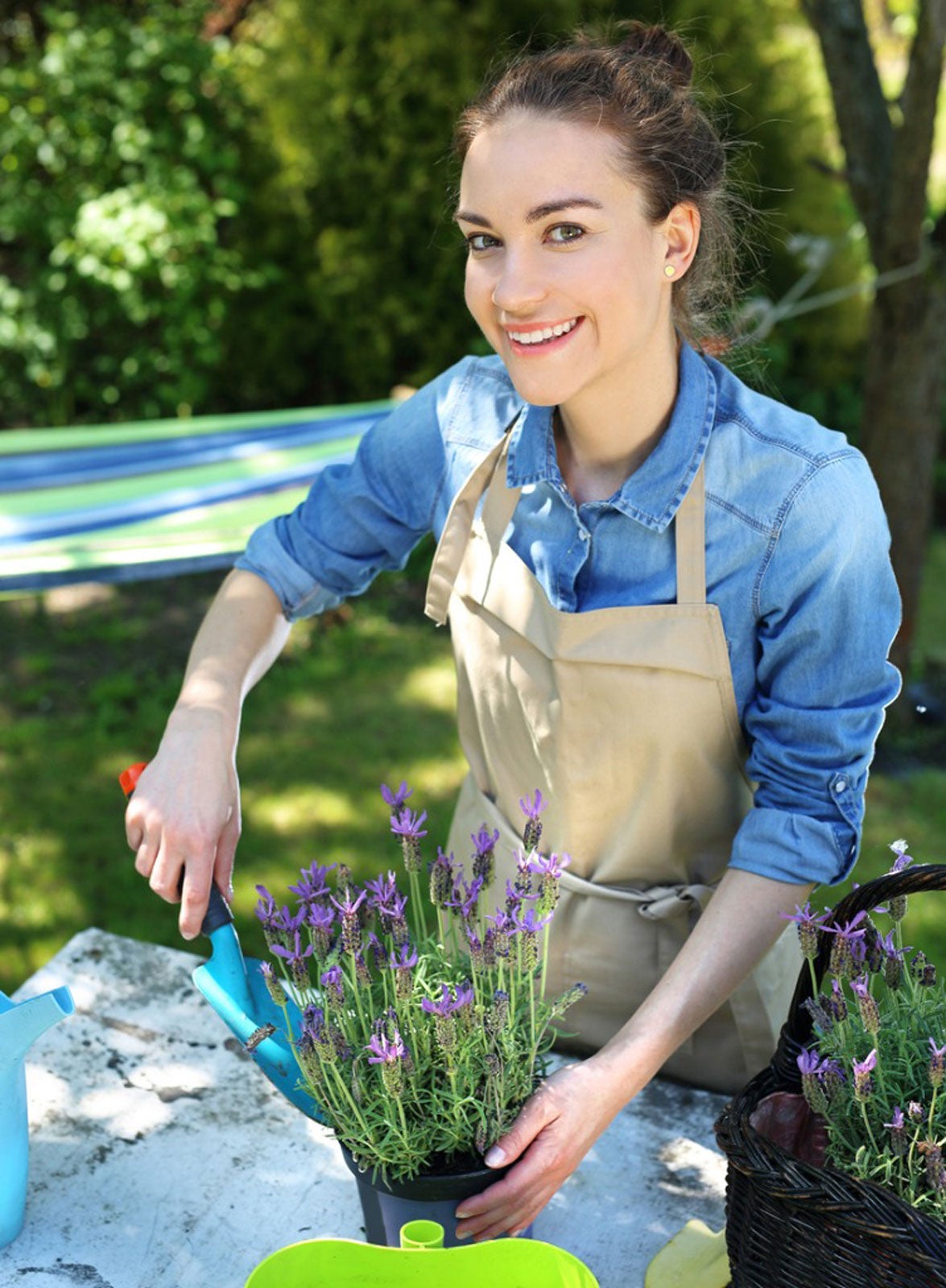Moving A Lavender Plant – How To Transplant Lavender In The Garden


Lavender is a tough, adaptable plant that grows beautifully without a lot of fuss and moving a lavender plant to a new location isn’t difficult as long as you prepare the new spot carefully.
Newly transplanted lavender requires a bit of tender loving care until the roots are established. Take a look at our tips on how to transplant lavender and when to divide plants.
When to Divide and Transplant Lavender
Transplanting lavender can be done in spring or fall in mild climates, but spring is the best time for moving a lavender plant in climates with cold winters. Lavender accepts transplanting better when the weather isn’t too hot. Try to pick a cool (but not cold) day for transplanting.
How to Transplant Lavender
Prepare the soil in the new location ahead of time. Be sure the spot is sunny and that the soil drains well, as lavender will rot in soggy conditions. You can improve drainage by digging in plenty of compost, chopped leaves, or other organic matter; however, it’s best to choose a better location if the soil is heavy clay or is very poorly drained. Water the plant well. Remove flowers and trim any damaged or dead branches.
Use a sharp shovel or spade to dig a wide circle around the plant as lavender plants have extensive root systems. Lift the plant carefully from the ground with soil intact as much as possible. Dig a hole in the new location. The hole should be at least twice as wide as the root system. Scratch a little bone meal and balanced, general-purpose fertilizer into the bottom of the hole.
Set the lavender plant carefully in the hole, then fill in around the roots with the removed soil. The top of the root ball should be the same depth as in the plant’s previous location. Be careful not to cover the crown.
Water well after planting, then keep the soil moist (but never soggy) until the roots are established. At that time the plant will be more drought tolerant.
Gardening tips, videos, info and more delivered right to your inbox!
Sign up for the Gardening Know How newsletter today and receive a free copy of our e-book "How to Grow Delicious Tomatoes".
Cut off spiky blooms during the plant’s first growing season. This isn’t easy to do but removing flowers will focus the plant’s energy on developing healthy roots and foliage – and more beautiful blooms going forward. Cut the plant back by about a third during the first autumn. This pays off with a healthier plant next spring.
Note on Dividing Lavender
Lavender is a woody plant and if you try to split it, it will likely die. If you want to propagate a new plant, lavender is easy to start by taking cuttings from a healthy plant. If your plant looks overgrown, pruning is a better option.

A Credentialed Garden Writer, Mary H. Dyer was with Gardening Know How in the very beginning, publishing articles as early as 2007.
-
 Looking For Plants To Give You The Soft And Fuzzies? Try These 5 Fuzzy Leaf Plant Options
Looking For Plants To Give You The Soft And Fuzzies? Try These 5 Fuzzy Leaf Plant OptionsLovers of texture, drama, silver foliage and tactile plants will adore these special sensory garden additions. These fuzzy leaf plant options will leave you all aglow
By Susan Albert
-
 Get Ready For A Summer Of Hummers! Grow These Full Sun Hummingbird Plants and Flowers
Get Ready For A Summer Of Hummers! Grow These Full Sun Hummingbird Plants and FlowersIf you’re lucky enough to enjoy a sunny backyard, make sure you are maxing out on your pollinator opportunities and grow these full sun hummingbird plants and flowers
By Tonya Barnett